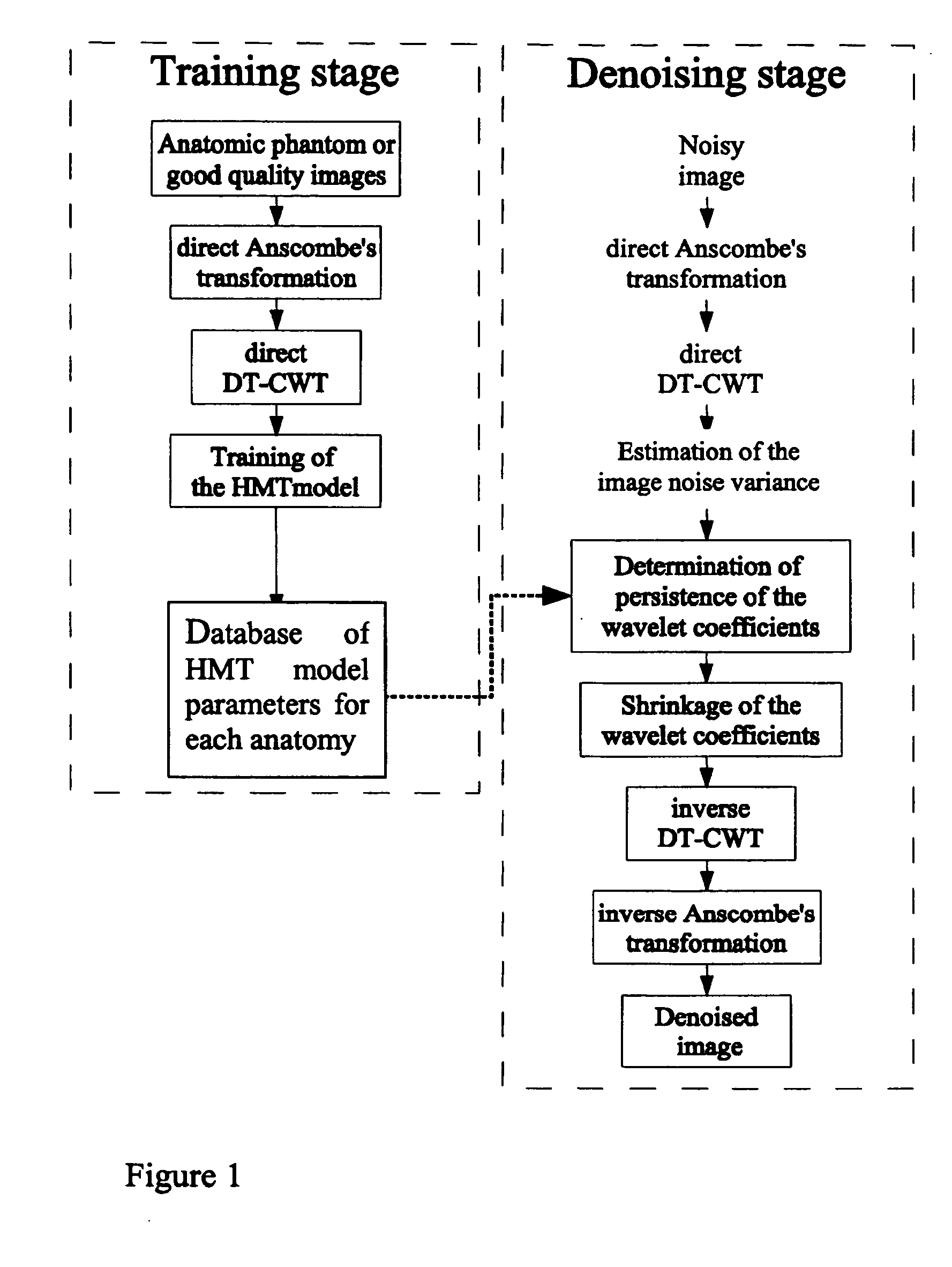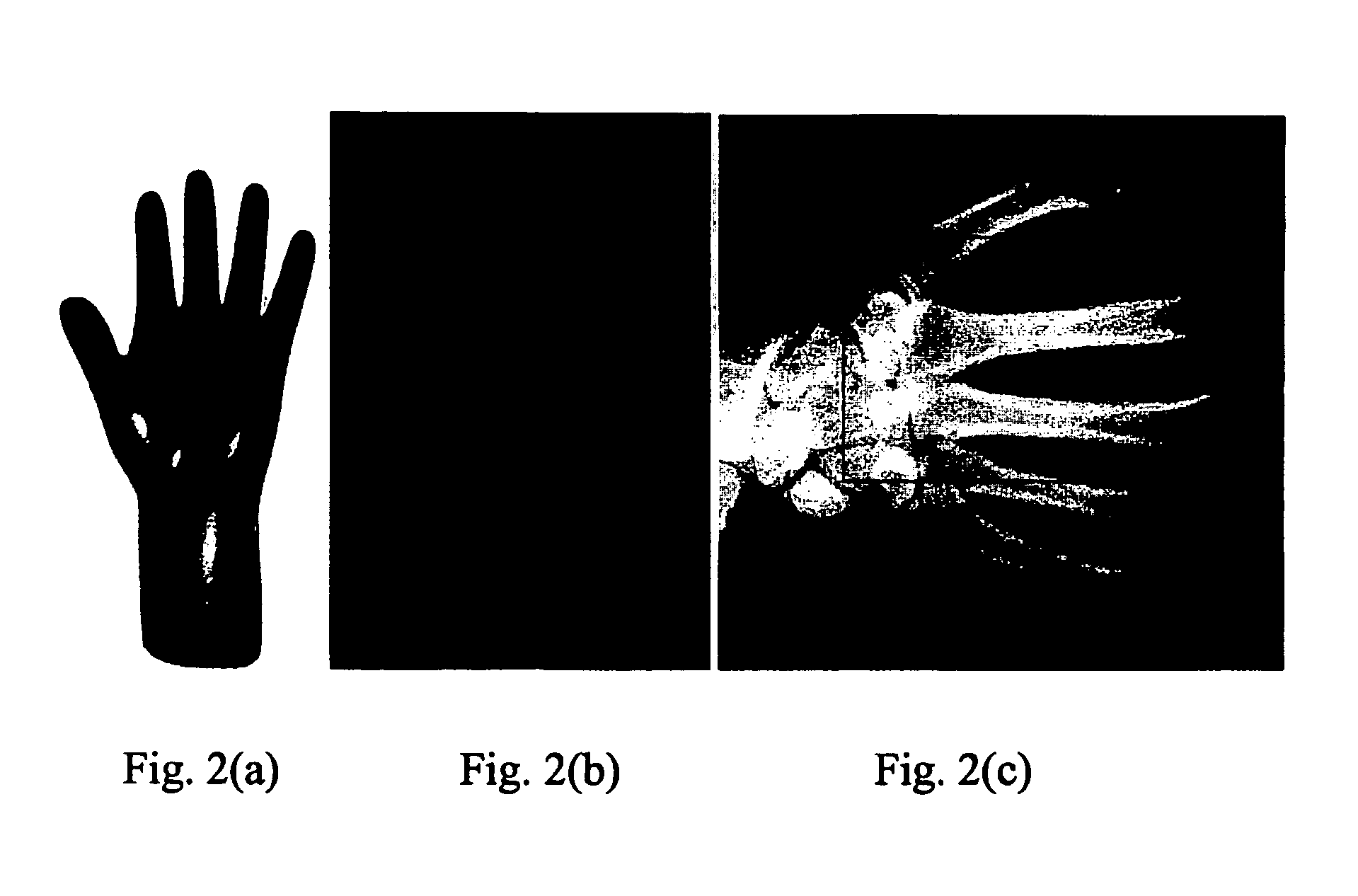De-noising digital radiological images
a digital radiological image and de-noising technology, applied in the field of de-noising digital radiological images, can solve the problems of insufficient computational cost, de-noising of traditional wavelet-based de-noising techniques, and degraded visual performance of most of these techniques, and achieve the effect of effective de-noising
- Summary
- Abstract
- Description
- Claims
- Application Information
AI Technical Summary
Benefits of technology
Problems solved by technology
Method used
Image
Examples
Embodiment Construction
[0024] According to one embodiment of the invention and referring to FIG. 1, a method for de-noising radiographic images starts by pre-processing an original image using Anscombe's variance stabilizing transformation, which acts as if the data arose from a Gaussian white noise model. The image is then decomposed in different sub-bands of frequency and orientation responses using an overcomplete dual-tree complex wavelet transform (DT-CWT). By using the DT-CWT, visual artifacts usually present in an image transformed by the traditional DWT are significantly minimized, with the advantage of having a task that is still tractable in terms of computation time. A Hidden Markov Tree (HMT) model is used to describe the correlation among the wavelet coefficients by modeling their marginal distribution and thus improving the discrimination between noisy and singularity pixels in an image. Finally, the modified wavelet coefficients are transformed back into the original domain in order to get ...
PUM
 Login to View More
Login to View More Abstract
Description
Claims
Application Information
 Login to View More
Login to View More - R&D
- Intellectual Property
- Life Sciences
- Materials
- Tech Scout
- Unparalleled Data Quality
- Higher Quality Content
- 60% Fewer Hallucinations
Browse by: Latest US Patents, China's latest patents, Technical Efficacy Thesaurus, Application Domain, Technology Topic, Popular Technical Reports.
© 2025 PatSnap. All rights reserved.Legal|Privacy policy|Modern Slavery Act Transparency Statement|Sitemap|About US| Contact US: help@patsnap.com



